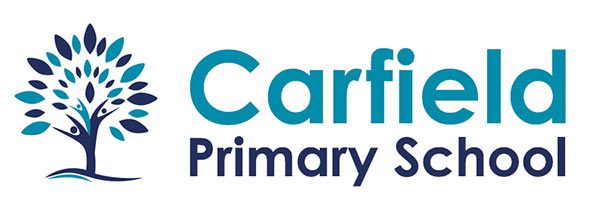Computing
Our Vision…
At Carfield, we aim for our pupils to confidently understand the key principles behind computer science and how computational creativity impacts and changes the world we live in. Pupils will know how digital systems work and they will be able to put this knowledge to use through programming. The computing curriculum will directly link with mathematics, science and design technology. Pupils will become digitally literate and they will be know how to express themselves digitally in a safe and informative way. They will be ready for the future of technology and the developments that may occur in their lifetime.

Intent
By the time pupils leave Carfield at the end of Key Stage 2, they will be equipped with the necessary digital tools to be able to continue their learning of a fast-paced, digital world in KS3. Pupils will have an understanding of algorythms and the logical reasoning behind these, they will be able to create and debug programmes, as well as being able to select suitable and relevant software for a task. As pupils progress through the curriculum journey, they will gain an understanding of the multiple services the internet provides and how communication across the world has changed as a result of it. Pupils will be taught to use technology effectively but safely. Online safety is a key thread throughout the computing curriculum and pupils will be able to recognise and talk about the dangers online to both themselves and others, and importantly how they can keep themselves safe.
Implementation
- Computing is taught weekly
- Pupils are taught using iPads, laptops and other computer based technology where relevant
- An evidence of skills is built up through photo based portfolios, pupils can add to this themselves using Seesaw (in KS2)
- Pupils can talk about the skills they learn in computing, as well as demonstrate these
Impact
- Children demonstrate a confident ability to be able to talk about computer programming, systems and uses and they can verbally explain what they are doing and why.
- Pupils are able to make informed choices about software, they can discuss which software they have chosen to use for a certain task and say why they have chosen it.
- Pupils are digitally literate – they understand how technology links to the wider world and they know of reali-life jobs and situations which are directly related to computing. Pupils refer to themselves as programmers and designers.
